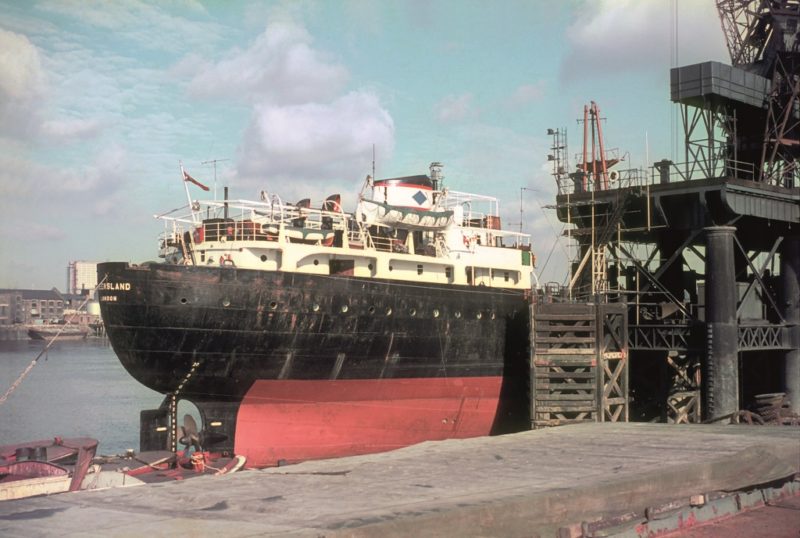
This Anglo-Dutch company operated a large fleet of sixty colliers over a 85-year period until 1980. Holland was supplied with large quantities of North-East England coal from the end of the 19th century, as well as from the Ruhr collieries across the border in Germany.
It was not uncommon for Dutch coal importers to buy the entire annual output of Newcastle and Durham collieries, therebye negotiating favourable prices for very large quantities. Scheepvaart & Steenkolen Maats N.V. of Rotterdam (Shipping & Coal) was the leading Dutch coal importer, and was founded in the mid- l890s to distribute coal along the canal system.
A new collier was completed in 1896 on the Tees by Raylton Dixon as Zuid Holland, and another Ailsa-built collier Mayflower was purchased soon after completion and renamed Noord Holland Two new larger colliers were then completed as Olanda from William Gray at Hartlepool and Gelderland from Blyth, which were soon transferred to a small Dutch associate company.
A Tyne-built collier Beijerland followed in 1903 from William Dobson & Co. Ltd. as well as the smaller Waterland, which moved up in the world to become Egyptian Prince of Prince Line during 1920/22 and then had a very long life under the Egyptian flag.
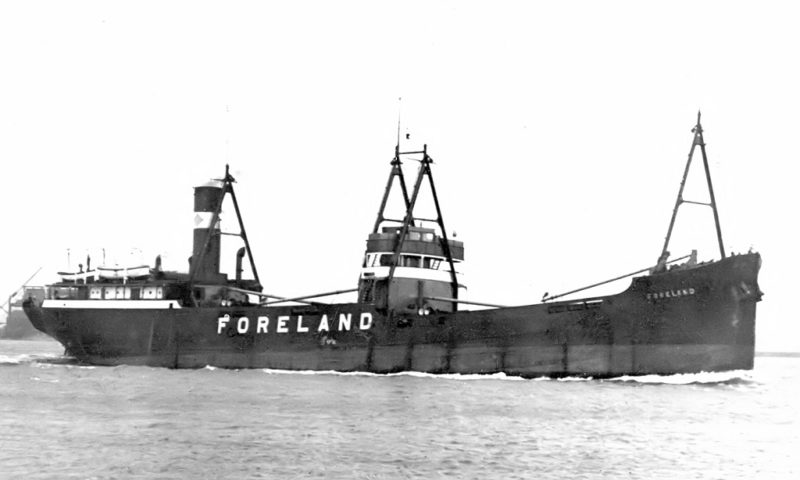
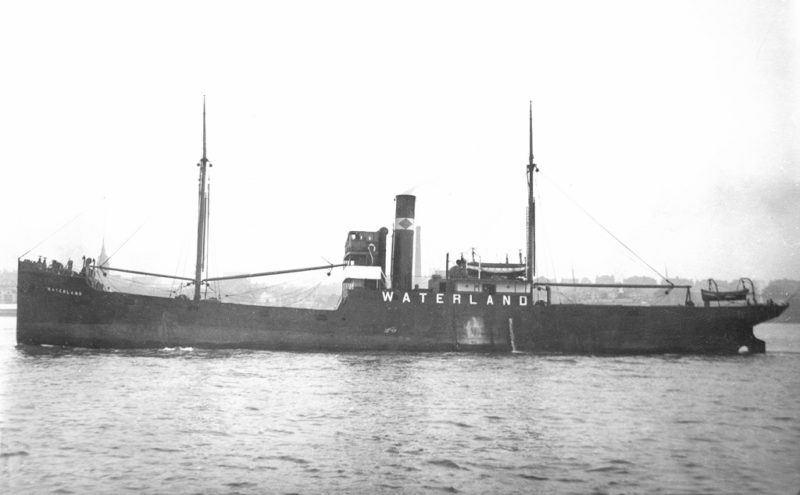
When the scale on imports had become significant, orders were placed for ten new colliers with Dutch yards for completion from the turn of the century until 1914. The Van der Vorm family were the major shareholders in the company, and also held large holdings in the passenger-carrying Holland-America Line, founded in 1897 from an existing company, and in the Rotterdam shipyard of Wilton Fijenoord at Schiedam.
A new Austin-built collier was transferred to the British flag in 1914 as Foreland in order to take small steam coal and slack residue, which was unsaleable in Holland, down to the Thames. She was to become one of six war losses sustained by the fleet during the Great War:-
1.4.1915 Schieland – Mined & sunk 24 ESE of Spurn Head on a voyage from Goole to Rotterdam with coal
18.4.1915 Olanda – Mined & sunk 30 miles E of Outer Dowsing LV on a voyage from Seaham to Rotterdam with coal
25.3.1916 Duiveland – Mined & sunk 6 miles S of Kentish Knock LV on a voyage from London to Sunderland in ballast
1.8.1916 Zeeland – Sunk by gunfire from UB-39 5 miles off the Tyne on a voyage from Methil to Rouen with coal
12.2.1917 Foreland – Mined & sunk 6 miles SW of Shipwash LV on a voyage from Blyth to Devonport with coal
25.5.1917 Westland – Mined & sunk 30 miles NW of Yarmouth on a voyage from Methil to Rouen with coal
Ten replacement colliers were completed during the war at Dutch shipyards in order to balance the losses, and fleet strength had risen to 14 colliers at the end of hostilities. The design of the fleet had previously been engines-amidships raised quarterdeckers, but a quartet of engines-aft colliers were completed in 1916 as Schieland (2), Sint Annaland, Sint Jansland and Sint Philipsland of 3,030 dwt from yards such as the Rijkee yard in Rotterdam. Their four holds were served by four very large derricks which were swung from triangular masts, with the ‘midships bridge having one of these masts on its front and one on its rear to give a distinctive appearance of a ‘midships gantry. The smaller Dirksland of 1915 also had this appearance. Three new colliers were then completed in 1924/25 at the Krupp yard in Kiel and the Jan Smit yard at Alblasserdam as Zeeland (2), Friesland (2) and Westland (3). The Dutch-flag also carried cargoes of Tyne coal to Germany, Baltic and Scandinavian countries, and occasionally to Rouen. Deep-sea ships were also occasionally chartered for Transatlantic voyages with coal to Eastern Seaboard ports such as Newport News.
A small coaster of 750 dwt was then completed at the Wilton Fijenoord yard at Schiedam in March, 1927 for the British flag as Foreland (2), but she had a very short career as she was wrecked eleven months later on the north coast of Guernsey while on a voyage from Amsterdam to Guernsey with coal.
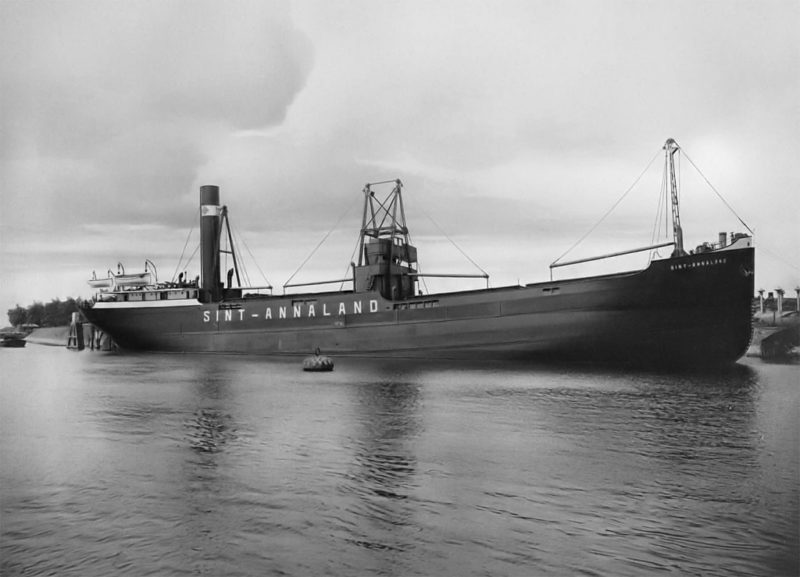
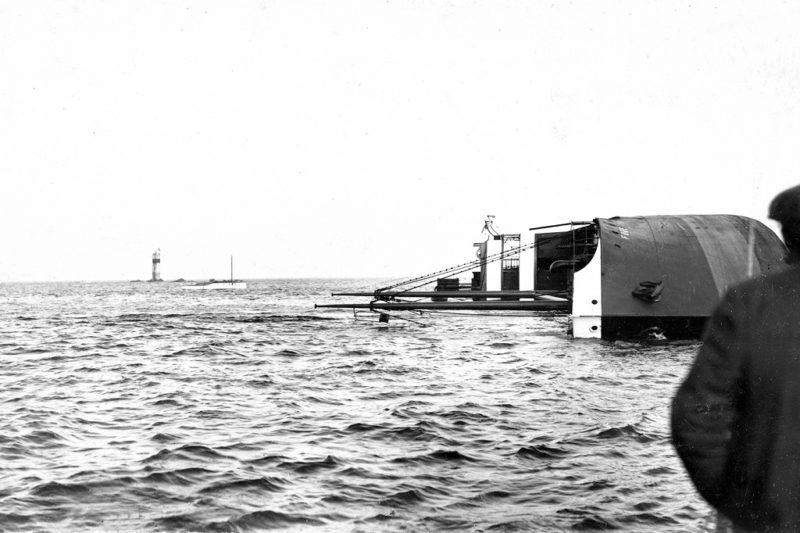
Beijerland (2) was completed at the Jan Smit yard at Alblasserdam in 1928, and was followed from the same yard by one of a pair of larger engines aft colliers of 4,200 dwt, Zeeland (3) in 1930. The order for her sister Friesland (3) went to the experienced collier-building yard at Blyth, which was operating at that time as Cowpen Dry Docks & Shipbuilding Co. Ltd. This pair were not equipped with the triangular masts of the war-built quartet but still carried cargo handling gear and derricks.
The Anglo-Dutch collier fleet was 16 colliers strong in 1925, rising to 17 colliers in 1930, a strength it kept throughout the Depression years and up to 1939. Five colliers were transferred to the British flag during the 1930s:-
Foreland (3) ex Dirksland of 1915 in 1930
Waterland ex Gaasterland of 1915 in 1932
Woodland ex Zuid Holland of 1911 in 1933 Highland
Highland ex Oosterland of 1916 in 1932
Lowland ex Noord Holland of 1911 in 1933
Woodland was sold for further trading in 1935, and only one other collier was sold during the Depression years, another sign of the importance of the Continental coal trade to North-East collieries during those very difficult years. Three motor coasters, the first in the fleet, were completed during 1937/39 from the Van der Giessen yard at Krimpen for coastal North European trades.
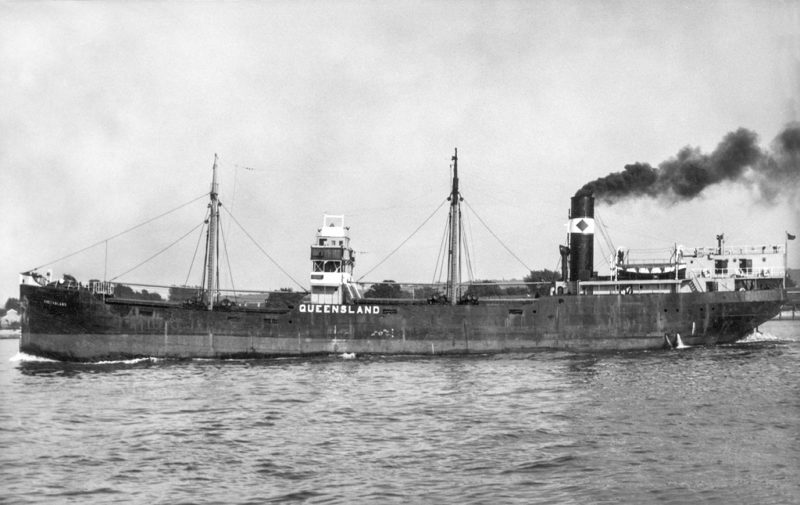
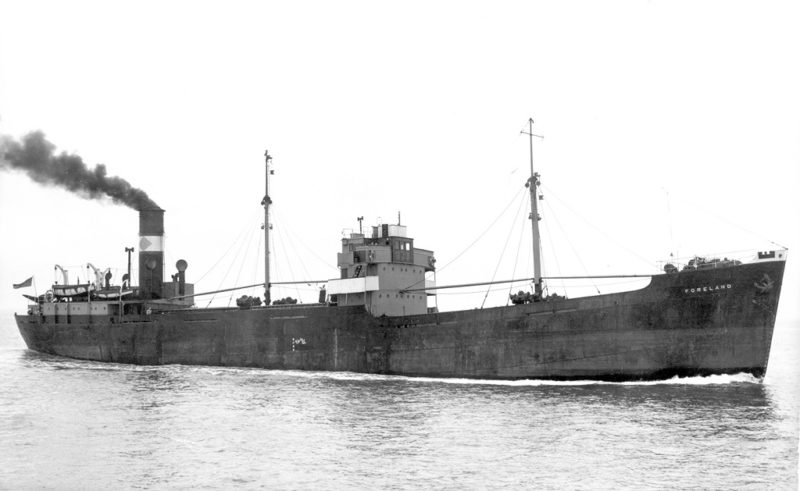
The combined Anglo-Dutch fleet of 17 colliers in 1939 included 4 under the British flag, Queensland formerly Beijerland (2) of 1928, Waterland, Lowland, and a new Burntisland-built collier of 4,200 dwt, Foreland (4), completed shortly after the outbreak of war in September 1939. This large fleet was to be practically wiped out by mine, bomb and torpedo during the next six years with no fewer than 13 losses:-

22.11.1939 Lowland – Mined & sunk near Gunfleet buoy on a voyage from Blyth & Hartlepool to London with coal, 9 lives lost
17.3.1940 Sint Annaland – Mined & sunk off East Anglia on a voyage from Tyne to Sluiskil with coal
18.5.1940 Sint Philipsland – Sunk as a blockship at Terneuzen, later raised by the Germans and put back into service as Albert Janus only to be sunk again by the Allies on 5.12.1944
4.9.1940 Nieuwland – Torpedoed & sunk by E-boat off East Anglia on a voyage from Sunderland to London with coal, 8 lives lost
5.10.1940 Ottoland – Mined & sunk off Hartlepool on a voyage from Bouctouche, New Brunswick to lmmingham with timber pitprops
10.3.1941 Waterland – Mined & sunk in English Channel off Dungeness on a voyage from Sunderland to Cowes with coal, 7 lives lost
20.6.1941 Schieland – Bombed & sunk off the Humber on a voyage from Blyth to London with coal, 16 lives lost
27.10.1941 Friesland – Bombed & sunk off the Humber on a voyage from London to Blyth, 13 lives lost
12.12.1942 Beijerland – Torpedoed & sunk near Le Treport having been taken over by the Germans in 1940 initially as N.S.IV then as Spreebrecher 14
44.1.1943 Schoklandn – Wrecked on south coast of Jersey after having been taken over by the Germans in 1941 and used to supply the Channel Islands. 106 lives lost.
23.5.1943 Westland – Mined & sunk north of Ameland having been taken over by the Germans during 1942 as Sperrbrecher 173
25.7.1944 Opsterland – Bombed by Russian planes and then blew up due to her cargo of munitions having been taken over by the Germans in 1940 as Nordwind
1.11.1944 Midsland – Sunk near Calais by the Allies after having been taken over by the Germans in 1941 and used to supply the Channel Islands. Raised in 1946 and then broken up.
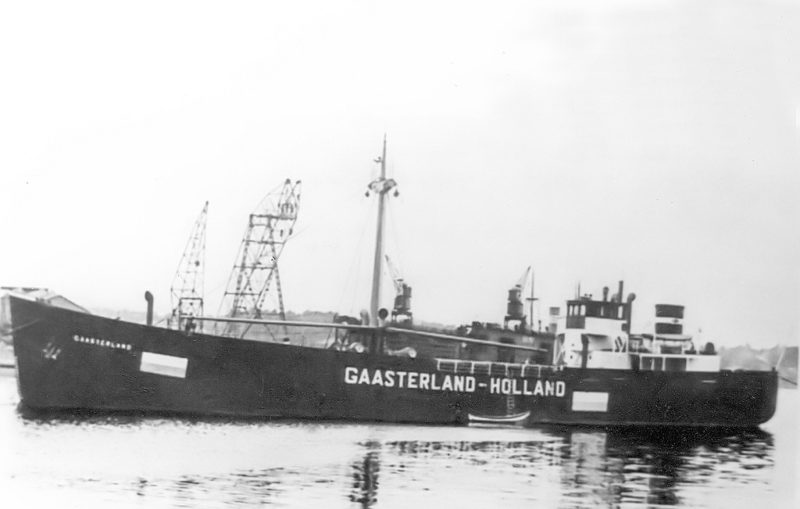

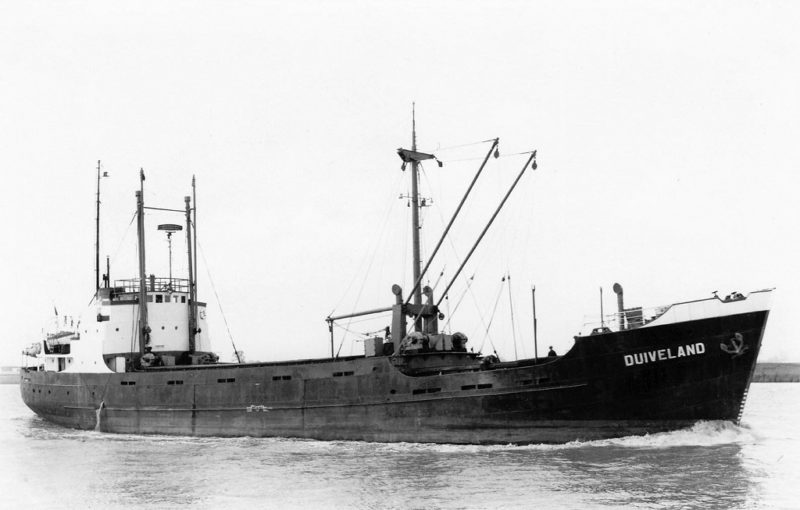
The British-flag Queensland of 1928 and Foreland of 1939 survived this onslaught as well as the Dutch-flagged Zeeland of 1930 and Hoogland of 1916, which completed a 35 year career with the company when sold for further trading in 1951 and a total career of 57 years when she was broken up at La Spezia at the end of 1973. The British surviving pair were joined in 1950 by one of a pair of new colliers of 4,200 dwt built by the Burntisland yard, Waterland (2). Her sister was completed for the Dutch flag as Friesland (4) and the combined fleet of six colliers continued to ship British coal to Holland as well as down the East coast to London.
The British-flag trio worked the East coast trade until Queensland of 1928 arrived at Ghent for scrap on 31st July 1958. The war replacements for the Dutch-flag fleet apart from Hoogland (2) of 1956 of 2,250 dwt were mostly motor coasters which were designed to operate in a liner service along the North European coast as well as carry smaller cargoes of coal.
The company had also operated a liner service on this coast in its early days in conjunction with the Holland Steam Shipping Company.
The Anglo-Dutch fleet consisted of eleven colliers and coasters in 1960, including two under the British flag, Foreland of 1939 and Waterland of 1950.

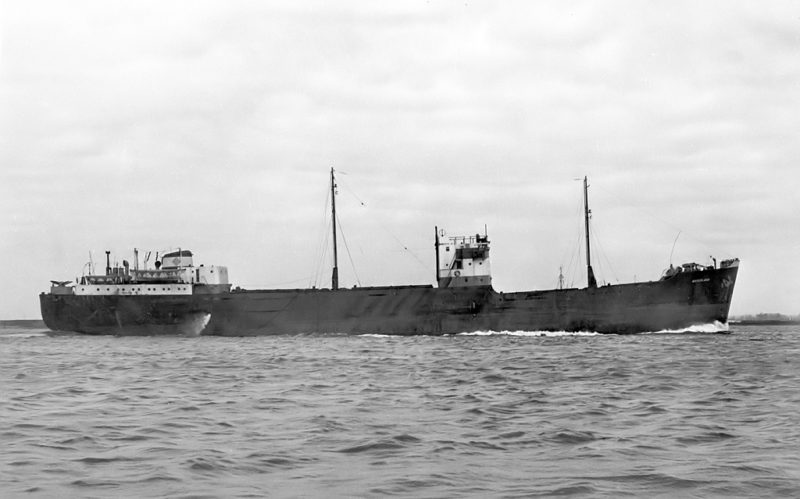
They were joined by the all aft new motor collier Greenland of 3,300 dwt in 1962 from the Wear Dockyard of Austin & Pickersgill Ltd. As well as charters to Stephenson Clarke and William Cory for the natonalised electricity and gas industries, another important customer was London Transport.
When the Newbigin collier Greathope of 3,685 dwt was purchased in 1964 and renamed Queensland (2) she was used exclusively for this customer to their wharf near Greenwich.
Foreland was sold for scrap during 1965, and the British-flag trio of Waterland of 1950, Greenland of 1962 and Queensland of 1958 continued to sail on the East coast trades well into the 1970s. All three were sold for further service with Greek owners in the Eastern Mediterranean, Waterland in 1971, Queensland in 1976 and Greenland in 1980. Greenland also operated in the Continental trades at the end of her company career, as well as in the West coast and Irish trades.
One final steam collier entered the fleet in 1972, this was the 4,600 dwt electricity collier Captain J.M. Donaldson of the Central Electricity Generating Board which was built in 1951 and renamed Highland. She operated out of Seaham Harbour for three years with power station coal for the Thames before being sold and reduced to a barge in October 1975.
The coasters of the Dutch-flagged fleet continued on their liner service along the North European coast until 1980, with only one ship operated during 1980/87, Midsland (3) on a sale and charter back basis. A venture into the deep-sea trades with the bulker Foreland (5) of 37,750 dwt lasted twelve years from her completion at the Van der Giessen yard at Krimpen in 1967. She was delivered to the order of the sister British company for financial reasons, and she was sold to Philippine owners in 1979 and renamed Asean Nations.
The funnel colours of this Anglo-Dutch fleet incorporated a blue diamond on a white central band between two thin red bands, and this was the only other collier fleet apart from Cory to feature the symbol of the coal trade, the ‘black diamond’.
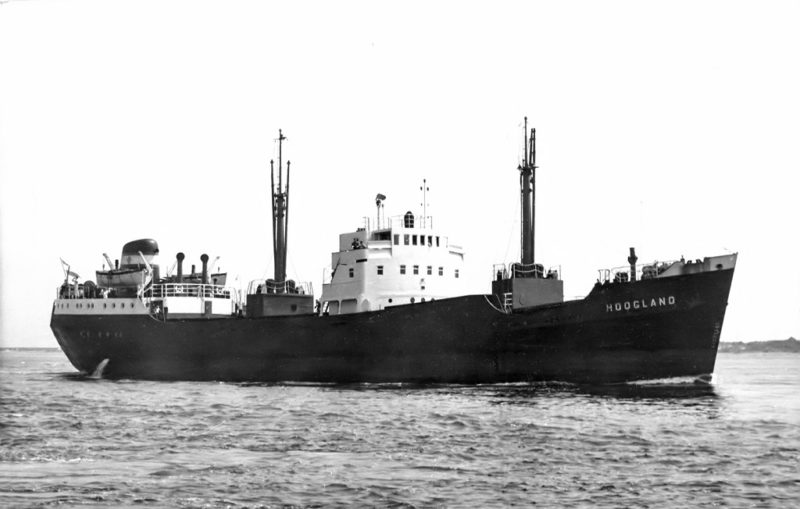
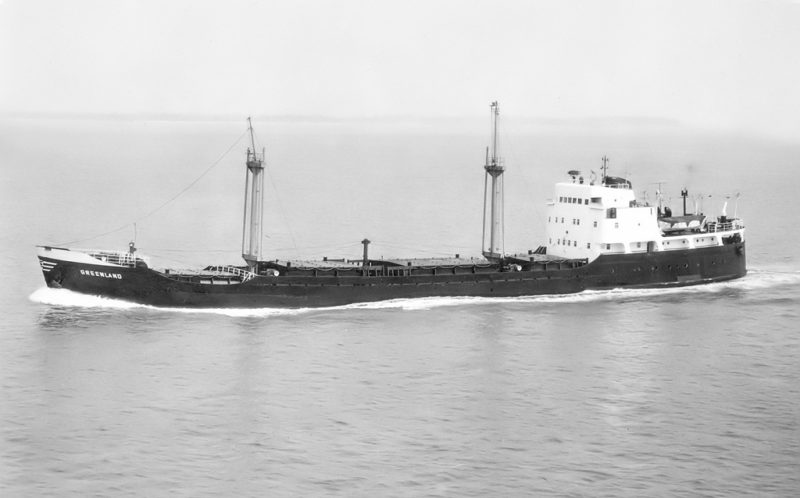

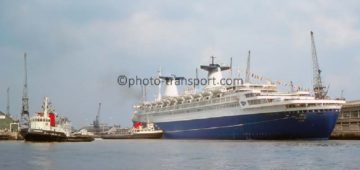



Comments
Sorry, comments are closed for this item